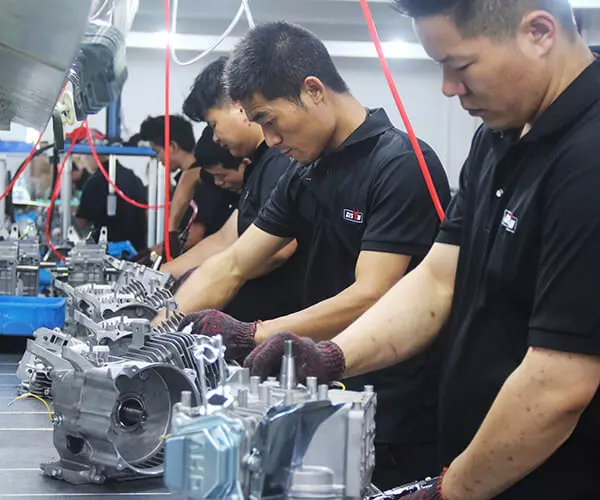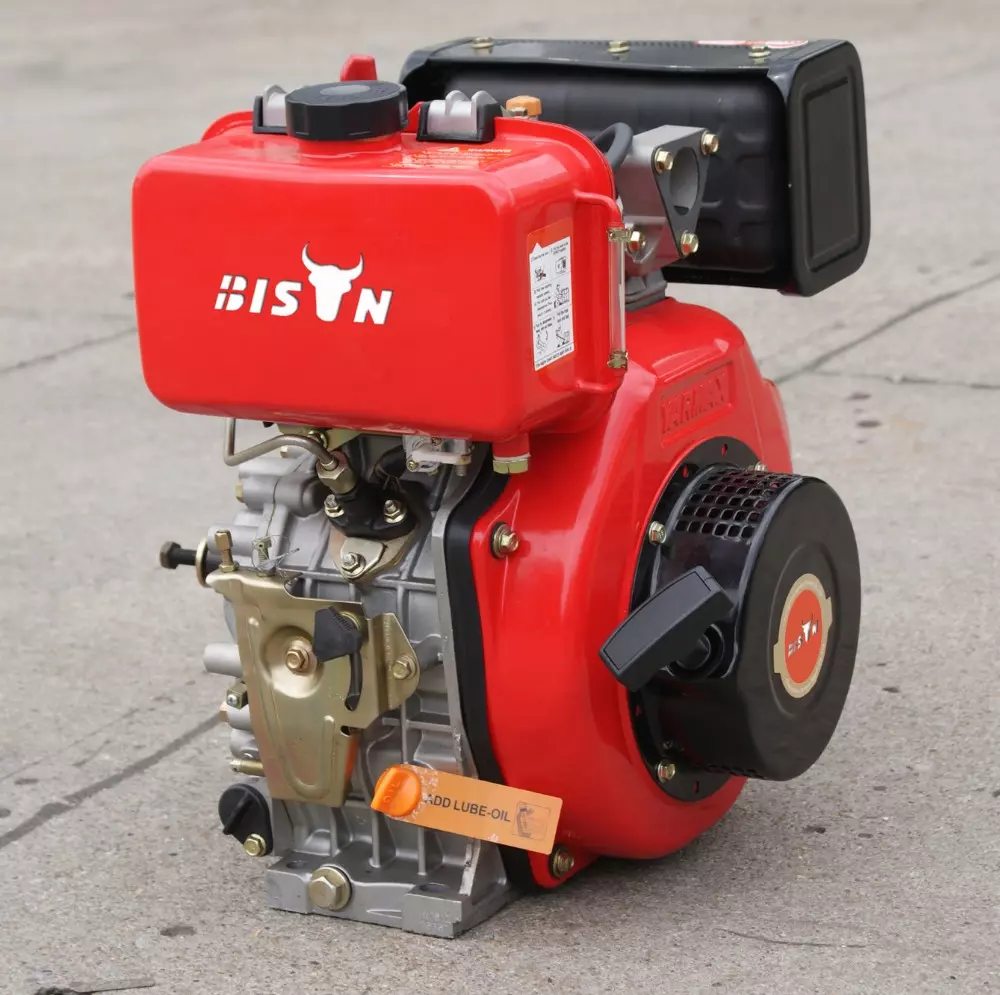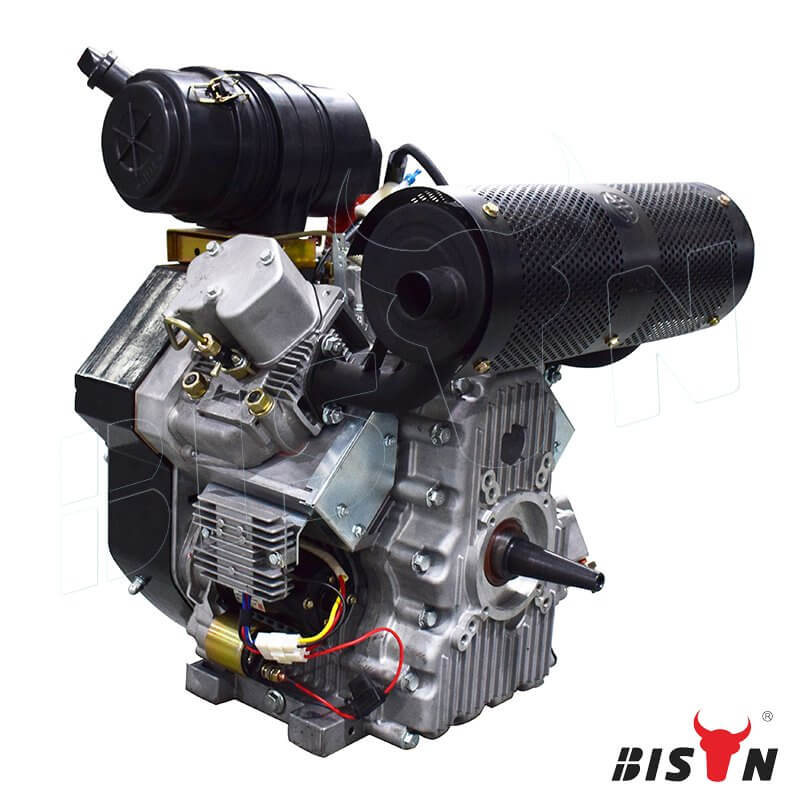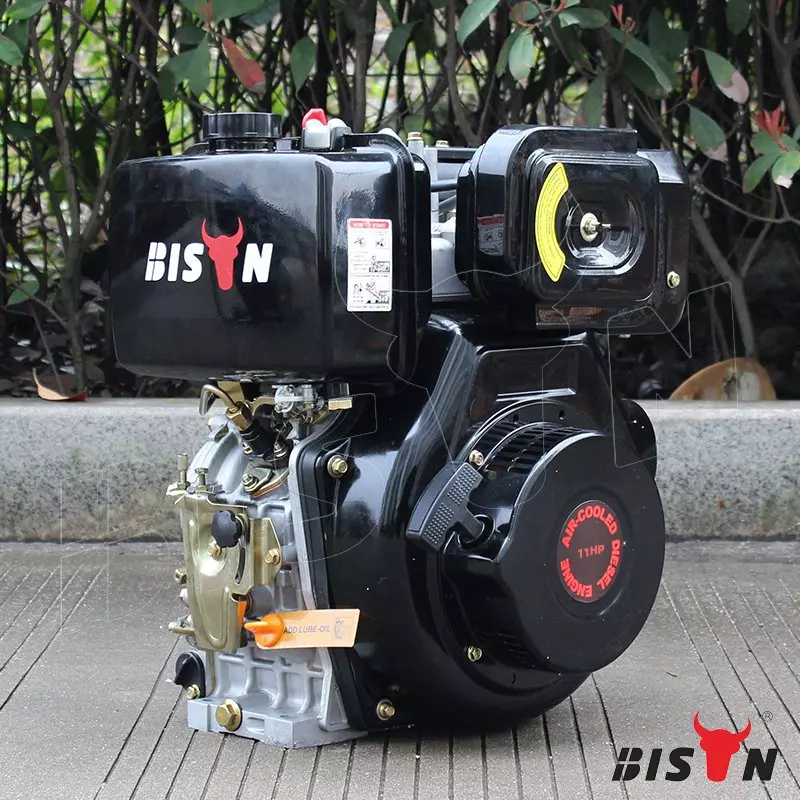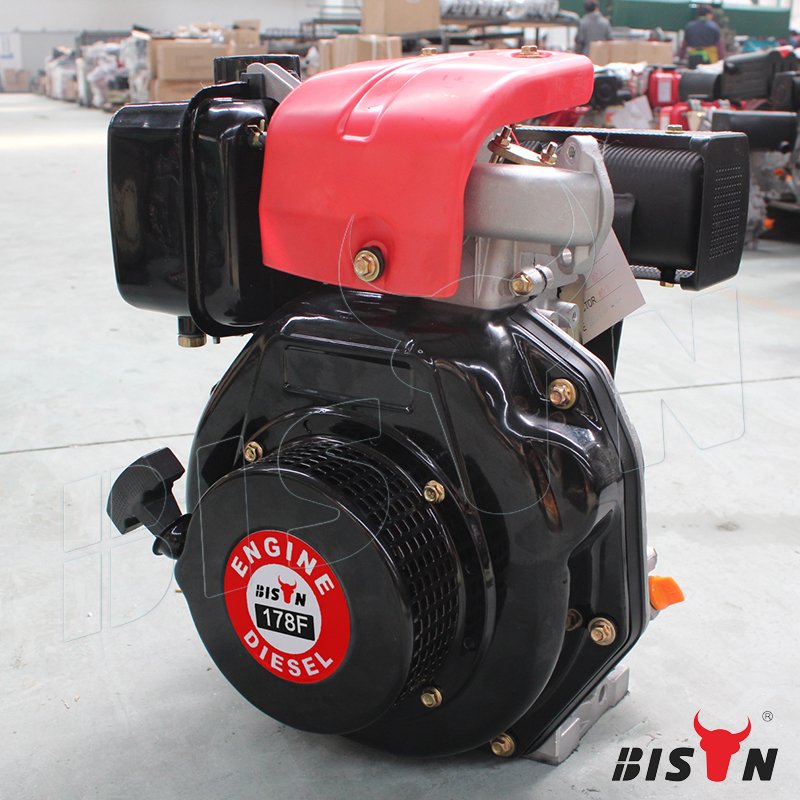

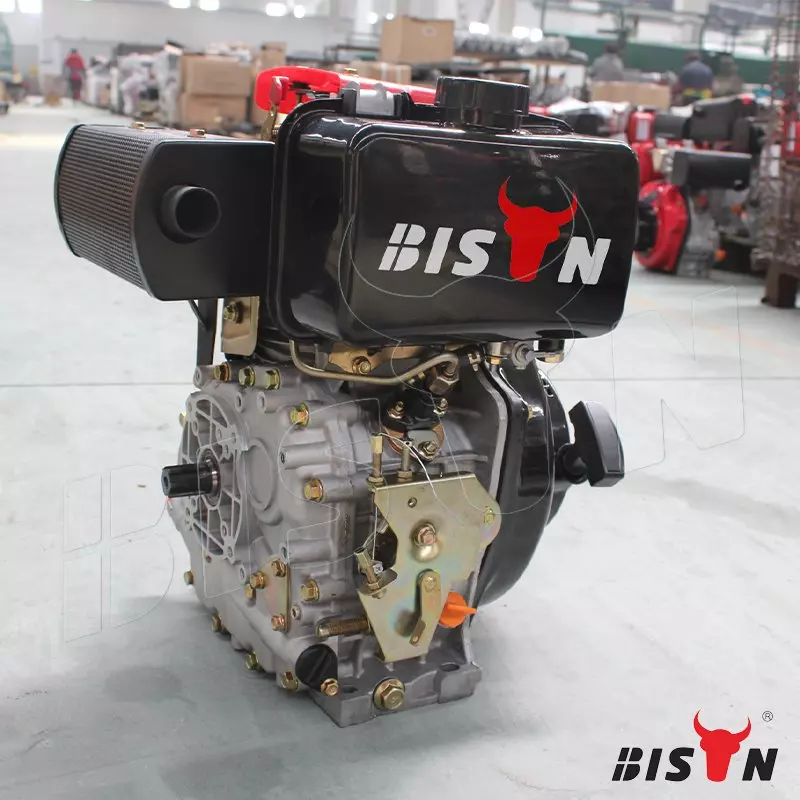
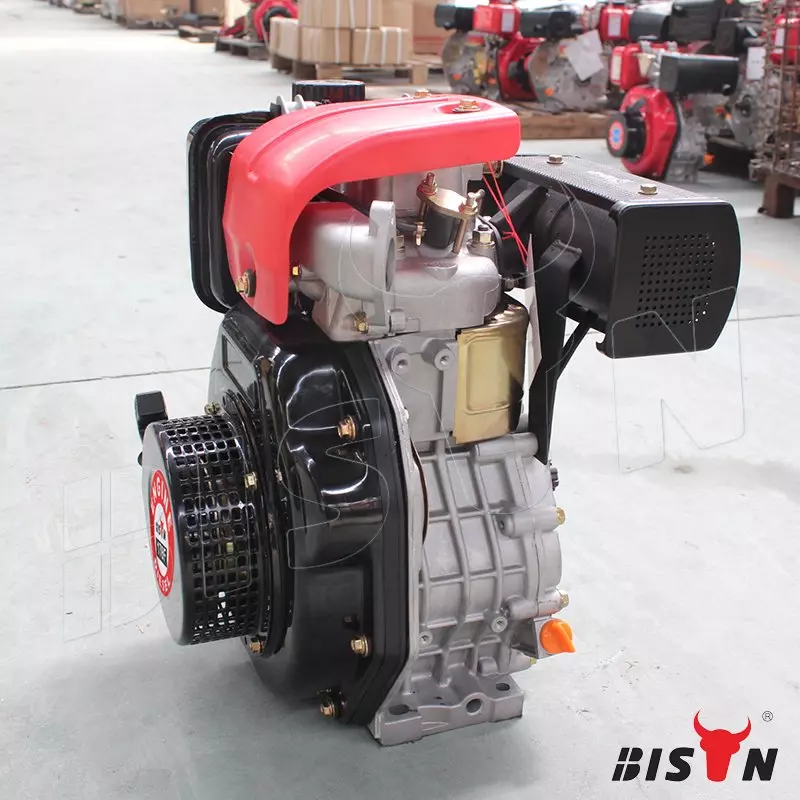
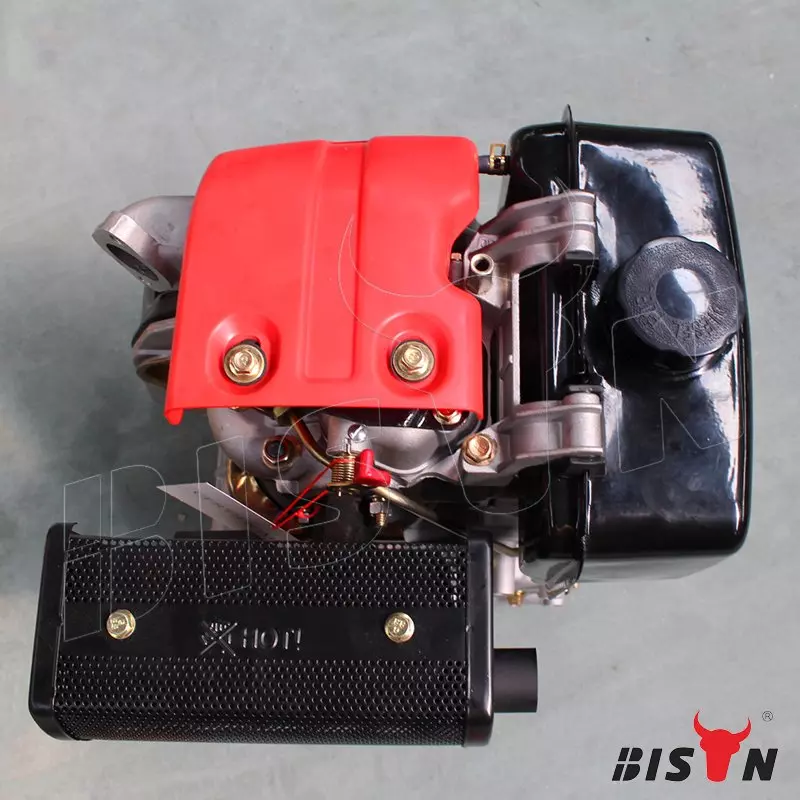
178F 6HP 4-stroke diesel engine
| Minimal order | 20 pieces |
| Payments | L/C, T/T, O/A, D/A, D/P |
| Delivery | Within 15 days |
| Customization | Available |

178F 6HP 4-stroke diesel engine details
BISON engines are known for their excellent reliability and performance, with lower noise levels, lower vibration and lower emissions (without sacrificing power output or performance). This 178F engine uses four different piston strokes to operate effectively. During engine operation, the piston experiences four strokes to achieve each power cycle. An stroke is defined as an upward or downward movement of the piston. After 4 strokes, the cycle is complete and ready to start again.
4-stroke diesel engine achieves a good balance of power, reliability and efficiency. In terms of emissions, the 4-stroke mechanically separates each event, thereby reducing unburned fuel emissions. It can also separate oil from fuel, thereby significantly reducing carbon monoxide emissions.
The 178F OHV commercial grade diesel engine is designed for the most demanding commercial applications. The design of the overhead valve provides the possibility of more fuel saving, and the cast iron cylinder liner provides a longer service life. From motorcycles to lawn mowers and generators, 4-stroke engines power a variety of different types of equipment. Common applications include high-pressure cleaners, log separators, air compressors, and water pumps.
Air-cooled 4-stroke horizontal OHV engine
Easy-to-start recoil starter
Heavy-duty ball bearings support the crankshaft for greater stability
Large double-wall heavy fuel tank with fuel filter in the tank
Large, easy-to-fill fuel tank cap
178F 4-stroke diesel engine specification
Engine Model | BS178F |
Type | Air Cooled, Single Cylinder, 4 Stroke |
Engine Output | 6HP |
Bore x stroke | 78 x 62mm |
Displacement | 296cc |
Compression ratio | 20:1 |
Ignition system | Compression Combustion |
Starting system | Recoil start / Key start |
Rated rotation speed | 3000 / 3600rpm |
Fuel tank volume | 3.5L |
Ner/Gross Weight | 33kg |
20GP | 260set |
40HQ | 500set |
178F 6HP 4-stroke diesel engine Faq
What is the stroke of a four-stroke engine?
The stroke of a four-stroke diesel engine refers to intake, compression, work and exhaust. The piston completes two complete strokes in the cylinder to complete a working cycle.
Intake stroke
The intake stroke refers to the air entering the combustion chamber. When the piston moves from top dead center to bottom dead center and the intake valve opens, an intake event occurs. As the air continues to flow with its own inertia, the piston begins to change direction, and the cylinder continues to fill slightly past bottom dead center. Then the intake valve is closed and the air is sealed in the cylinder.
Compression stroke
The compression stroke compresses air in the cylinder. At this time, the intake valve and exhaust valve must be closed to ensure that the cylinder is sealed. The engine compression ratio refers to the comparison of the combustion chamber volume when the piston is at bottom dead center and the combustion chamber volume when the piston is at top dead center. The higher the compression ratio, the more fuel-efficient the engine.
Work stroke
Under the action of the high-pressure oil pump, diesel is injected into the combustion chamber. Due to the heat generated during compression, diesel fuel burns immediately after being mixed with air. The pressure of the gas in the cylinder rises rapidly to force the piston to move.
Exhaust stroke
When the piston reaches the bottom dead center during the power stroke, diesel combustion is complete and the cylinder is filled with exhaust gas. When the exhaust valve opens, the piston returns to the top dead center due to inertia, and exhaust gas is discharged through the exhaust valve. At the end of the exhaust stroke, the piston is at the top dead center, completing a working cycle.
